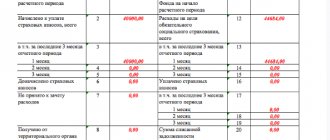Advertising is a tool for creating income in business by increasing sales volumes. However, when using this tool, you need to constantly monitor costs and evaluate the effectiveness of investments. So that advertising creates income that will exceed all expenses. Otherwise, the funds received from the sale of goods and services will not recoup the costs incurred and the entire operation of the company will become unprofitable.
What methods and indicators exist for assessing the effectiveness of advertising, how to correctly assess the economic efficiency of investments in various methods of promotion? You will find the answer to these questions below.
Why is performance assessment needed?
Advertising is a fairly expensive product that is in high demand among entrepreneurs. However, when launching advertising campaigns, you need to know the effectiveness and feasibility of specific promotion methods.
The peculiarity is that there is no single method of assessment. Tools for promoting goods or services influence the perception of the target audience in 50+ different ways and their number continues to grow. Therefore, over 10 assessment methods are already in use, but marketing analysts continue to develop new ones.
The assessment process itself requires additional financial costs. That is, in order to assess whether a company is effectively spending money on advertising tools, it is necessary to pay for the work of analysts and rent special services for analytics.
For quick bunnies: if you can’t wait to find out how to track the effectiveness of advertising, then follow the link https://roistat.com/ and test the end-to-end analytics service Roistat. You will have a bonus of 14 days of testing and 2000 rubles on your balance.
Therefore, before starting an advertising campaign, it is necessary to carefully prepare not only an action plan, but also the possibility of monitoring and evaluation at each stage. Moreover, efficiency can be calculated not only based on the results of the campaign, but also before the start of the campaign, as well as during its implementation.
The assessment is carried out according to the following scheme:
- Initial. When planning marketing activities, “reconnaissance” is carried out, based on the results of which a decision is made on the choice of tools and indicators that will make it possible to evaluate effectiveness. This could be the number of sales, brand or product awareness.
- Current. Conducted during advertising campaigns. As a rule, 1-2 studies are needed to adjust the marketing plan.
- Ultimate. Conducted after the completion of a campaign to evaluate its results. This data helps in the future to select and plan new promotion tools.
Please note that data from all previous studies and accumulated future studies may help evaluate effectiveness. Based on previously collected figures, you can choose the optimal and least costly ways to achieve your goals.
https://youtu.be/BNZhl6ysszc
Factor analysis of profitability indicators
Factor analysis of profitability ratios can be performed in two directions: on the basis of their calculation formulas and constructed factor models.
As an example of the first direction of factor analysis, let us consider the method of calculating the influence of factors on the deviation of profitability of sales using the method of chain substitutions (Table 1).
Table 1. Calculation of the influence of factors on the deviation of profitability of sales
| Substitution sequence | Determining factors | Return on sales (Ррр) | The magnitude of the factor’s influence on the deviation of the performance indicator | Factor name | |
| Revenue (VRn) | Profit from sales (PR) | ||||
| Base | VRn0 | PR0 | Rpr0 | — | — |
| 1 | VRn1 | PR0 | Rpr10 | Rpr10 - Rpr0 | Change in revenue |
| 2 | VRn1 | PR1 | Rpr1 | Rpr1 - Rpr10 | Change in sales profit |
Where, 0 – basic data, 1 – actual data
From the calculation formula of this indicator it can be seen that its value is determined by two factors: revenue and profit from sales. First, the influence on the deviation of sales profitability of a change in revenue as a quantitative factor is calculated, and then the influence of a change in sales profit as a qualitative factor is calculated.
Based on the results of the calculations, we can draw a conclusion about the influence on the deviation of the profitability of sales of each of its determining factors: revenue and profit from sales.
The second direction of factor analysis of profitability indicators allows us to identify the reasons for their changes in more detail and provides for the decomposition of the original formulas of these indicators according to all qualitative and quantitative characteristics of intensifying production and increasing the efficiency of financial and economic activities.
Factor models of profitability indicators reveal the relationship between indicators of financial condition and financial results; they are an indispensable tool for assessing the current situation; they are also used to predict the financial stability of an enterprise.
As examples, consider the factor models of return on assets and return on equity:
Ra = Npr * Oa
Rsk = Npr * Oa * Kfz
where, Ra - return on assets; Rsk - return on equity; Npr - rate of return; Oa - asset turnover ratio; Kfz - financial dependence coefficient, calculated based on average values.
As can be seen from the formulas, the return on assets is decisively influenced by two factors: the rate of profit and the asset turnover ratio, and the return on equity is influenced by three factors, to which the coefficient of financial dependence is also added to those mentioned above.
These factor models are multiplicative, therefore, the calculation of the influence of factors on the deviation of return on assets and return on equity can be performed using the absolute difference method.
When analyzing the deviation of return on assets (ΔPa), the impact of changes in the asset turnover ratio (ΔPa(Oa)) is first calculated, and then the change in the rate of profit (ΔPa(Npr)), denoting the basic data with the sign “0”, and the actual data with the sign “1”. data, we get:
Ra(Oa) = (Oa1 - Oa0) * Npr0
Ra(Npr) = Oa1 * (Npr1 - Npr0)
Let us check the correctness of the calculations by comparing the deviation of the performance indicator (return on assets) with the sum of the influences of the factors that determine it. There should be approximately equality between them:
ΔPa = Ra1 - Ra0 = ΔPa(Oa) + ΔPa(Npr)
Based on the results of the calculations, a conclusion is drawn about the impact on the deviation of the return on assets of changes in its determining factors: the asset turnover ratio and the rate of profit.
On the deviation of return on equity (ΔРsk), the influence of changes in the financial dependence ratio (ΔРsk(Кфз)) is first calculated, then - changes in the asset turnover ratio (ΔРsk(Оа)) and lastly - changes in the rate of profit (ΔРsk(Нр)), denoting The sign “0” indicates basic data, and the sign “1” indicates actual data:
Rsk(Kfz) = (Kfz1 - Kfz0) * Oa0 * Npr0
Rsk(Oa) = Kfz1 * (Oa1 - Oa0) * Npr0
Rsk(Npr) = Kfz1 * Oa1 * (Npr1 - Npr0)
Let us check the correctness of the calculations by comparing the deviation of the performance indicator (return on equity) with the sum of the influences of the factors that determine it. There should be approximately equality between them:
ΔРsk = Рsk1 - Рsk0 = ΔРsk(Kfz) + ΔРsk(Оа) + ΔРsk(Нр)
Based on the results of the calculations, a conclusion is drawn about the influence on the deviation of return on equity capital of changes in its determining factors: the coefficient of financial dependence, the asset turnover ratio and the rate of profit.
If necessary, based on the results of the analysis of profitability indicators, recommendations can be formulated aimed at increasing the efficiency of operations and the use of enterprise resources.
Reasons for low advertising effectiveness
Every business owner is interested in what determines the effectiveness of advertising. Actions to promote goods or services may show low efficiency and not justify the investment for the following reasons:
- Target. When planning the campaign, the customer or contractor did not set clear goals that were planned to be achieved;
- Strategy. Choosing the wrong way to achieve a specific goal;
- Client portrait. The target audience of the advertisement does not correspond to the target consumer of the product or service;
- Source. Errors when choosing the method of providing advertising information - radio, TV, Internet, social networks, outdoor, etc.;
- Market research. Lack of analysis of the impact of the advertising campaign on the target audience, including the results of using the product or service;
- Expertise. Insufficient knowledge and experience of full-time employees or employees of a hired company who are involved in product promotion;
- Reporting. Lack of a system for monitoring the results of ongoing activities.
Key Performance Indicators: Development Sequence
Step 1. Analysis of the strategy, strategic goal and purpose of the organization, their defragmentation into divisional goals
Each company goal is decomposed into goals of divisions and/or managers. The principle of decomposition is this: the purpose of the unit/manager must serve to achieve the purpose of the organization. That is, the goal of a specific performer is a means of achieving the goal of the organization. In this case, the so-called correct goal must meet certain criteria (SMART criteria). Each goal should have a numerical indicator by which it is convenient to monitor its achievement. For example: if the company's goal is to increase operating profit by 15%, then managers and the departments they lead may have the following goals:
- sales department – attracting an additional 700 clients; increase in turnover by 3.5 million rubles. (or achieving a turnover of 15 million rubles);
- HR department – implementation of a motivation system for sellers, reduction of personnel costs by 10%;
- business process department – reduction in sales cycle time by 15% (or two days);
- advertising department – increase in the number of responses to advertising by 5% (20 thousand).
One employee can be assigned several such goals. Setting three to four goals is considered optimal. If there are more of them (for example, five to seven), this will not only significantly complicate summing up, but will also reduce the employee’s focus, since he will lose sight of any goal. In some cases, only one indicator is used. For example, the sales director may have a goal to increase revenue by 8%.
Step 2. Determining the type of indicator: corporate (general) / individual
All indicators of achieving goals, as well as the goals themselves, are divided into strategic and operational. Strategic goals can be defined for all managers, regardless of the line of business that each of them heads. For example, indicators such as an increase in company revenue by N%, EBITDA, EVA may apply to all managers of the organization. At the same time, each manager feels responsible for the final result. Such indicators are called corporate, collective, general or team.
Some corporate indicators may be relevant to any one manager. For example, the indicator “increase in the number of clients” can be both collective and individual.
Operational goals are defined for those managers who can achieve them. Corresponding indicators are established for them. For example, by the end of the year the following indicators should be achieved:
- Sales department employees – to increase the number of clients to 4,700 by the end of the year;
- HR department employees – increase personnel costs to RUB 2,517,375;
- employees of the business process department - set a sales cycle of 10 working days;
- employees of the advertising department – receive at least 80 thousand responses to advertising.
| Example: |
Step 3. Determining the time perspective of indicators
The planning horizon is related to the company’s remuneration policy, as well as:
- with a bonus period for employees. If a company has introduced annual bonuses for a certain category of employees, then the measurement of the effectiveness of each of them can be annual or monthly, quarterly with an annual summary. Monthly bonuses are applied to ordinary employees, quarterly - for key specialists and middle-level managers, annual - for top managers;
- with the work cycle of the organization or the process in which the rewarded employee is engaged. For example, budgeting is carried out annually, and, accordingly, bonuses for such an employee will be annual;
- with the horizon of the goals themselves. If any goal must be achieved within three years, then the performance assessment will have the same perspective. For example, it may be established that –EBITDA is – in the amount of 10 – million rubles. needs to be achieved within a year, and the company’s capitalization in the amount of 78.5 million rubles. and – access to – IPO – within several years.
Step 4. Determine the direction of the indicator
The indicator is an integral part of the goal statement. When in this formulation there is no verb indicating what exactly needs to be done with the indicator (increase, decrease, etc.), the latter is given a certain direction:
- “less is better” – in – cases when the goal is – to reduce costs, the amount of defects, etc. -P. (for example, the goal is to achieve the “sales cycle” indicator equal to 10 working days, the focus is better less);
- “More is better” – when it is necessary to increase indicators such as profit, number of clients, turnover, etc. -P. (for example, the goal is to achieve the “number of clients per year” indicator equal to -4700, focus is better);
- “accurately” is not a quantitative, but a qualitative criterion of focus; it is used when it is necessary to determine whether a goal has been achieved, whether a project has been implemented, whether a transaction has been completed (for example, if the goal is to introduce a sales motivation system).
Step 5. Determining the weight of the indicator
Indicators may have different weights because each manager's contribution to achieving the organization's goals may vary. For example, during the year the head of the sales department must achieve the following indicators:
For an ordinary sales employee, the weight of the EBITDA indicator may be 5–10%, and for a back office employee it may be completely absent due to the weak influence of the efforts he puts on this indicator.
Step 6. Determining the boundaries of implementation and focus of the indicator
Completion boundaries are the minimum acceptable level of completion that is counted as completed, and the maximum level of completion.
| Example: |
Performance boundaries can act as constraints and stimulants. If, during the entire period allotted for achieving the goal, the indicator is below the minimum limit, then the goal is considered unachieved. In this case, no bonus is awarded to the employee. Exceeding the maximum limit of the target indicator entails additional (increased) remuneration or, on the contrary, a cessation of premium growth. In the first case, we can talk about an increasing multiplier, while the employee’s bonus will grow even faster than before reaching the maximum limit of the indicator; in the second case, we can talk about a “ceiling” (maximum level) of the bonus, established when higher output is no longer required.
Please note: with the “less is better” focus, it is desirable that the “project implementation period” indicator be less than planned. With an “exact” focus, the indicator may or may not have boundaries. In this example, the indicator is limited and may have a “less is better” orientation. That is, it should be taken into account that the company does not need to achieve this indicator too early, since the implementation of the system must be synchronized with other processes: personnel training, server purchases, database transfer, etc.
Step 7. Calculate the resulting percentage of completion (effectiveness)
When receiving the results of the year - actual data on the implementation of planned indicators - the effectiveness should be calculated.
| Example: |
In this case, performance is calculated as a weighted average percentage, that is, as the sum of the products of the percentage of completion of each indicator and its weight:
15% × 87% + 60% × 90% + 25% × 100% = 92%.
This value can be nothing more than a percentage of the accrued premium or one of the values affecting the size of the premium.
It should be borne in mind that in some cases, achievement of indicators is rewarded in different ways:
| Example: |
If the first (collective) target is met by 130%, the maximum bonus will be 110%. If the company meets this target, for example, by 150%, the premium will still not be higher than this 110%. If the last indicator is minimally met, the employee will be credited with only 60% of the bonus, and if it is exceeded - 105%. As you can see, the bonus for achieving this indicator is aimed at preventing violation of the deadline, but weakly stimulates its reduction.
If different bonus limits are established for certain indicators, its calculation will be slightly different: to do this, you will first need to calculate the percentage of completion, and then the bonus accrual coefficient for each indicator. The total bonus percentage is calculated in the same way as the weighted average. In this case, it is almost impossible to carry out calculations without using mathematical formulas.
Step 8. Assessing the achievement of indicators based on the results of the period
At the end of the billing period, the achievement of indicators is assessed. To calculate the final indicators, an audit (external or internal) is used or department heads are involved. Then the data is entered into individual documents (bonus card, indicator matrix, etc.), the individual percentage of achievement is calculated and the results are transferred for awarding bonuses. This completes the performance evaluation cycle.
Bonus matrices have become widespread, which do not imply the use of any formulas for calculating the amount of bonuses (Table 1).
They contain the limits for achieving planned indicators and the size of the bonus for each limit. The technology for working with such tables is simpler than described. It is better to tune it to a nonlinear function of the dependence of the size of the bonus on the level of goal achievement (Table 2).
What are the advantages and disadvantages of such a matrix? Its disadvantage (however, many see this, on the contrary, as an advantage) is that just one fraction of a percent in the column of the achieved indicator can decide the fate of the bonus. And the loss of this unit may well be the result of someone’s mistake made when summing up the results.
What makes up efficiency?
To objectively assess the effectiveness of an advertising channel, it is necessary to take into account the transaction cycle, the duration of the relationship with the client, and the time range. Even if you count the number of visitors to the site and determine the conversion percentage depending on the number of buyers, this calculation will not take into account the long-term effect. For example, returning a visitor to your site after 2-3 months or recommending it to a friend.
However, approximate calculations can and should be done. They will help you make current and strategic management decisions, identify more cost-effective promotion methods and optimize advertising budgets.
When making a rough estimate of effectiveness, two main factors are taken into account:
1. Informational. In this case, effectiveness is understood as the number of potential buyers of a product or service who were interested in advertising. Also, during the evaluation process, the psychological effect that occurs in the consumer after viewing or listening to advertising is determined.
2. Financial. This is a result in monetary terms, which shows how much profit advertising brought to the company using a specific tool.
There is also the term “advertising quality assessment”. It involves studying commercials, banners, advertisements in order to improve the semantic or external content, change the method of presentation, change the channel or time of placement.
Components of Information Effectiveness
Evaluating the informational component of an advertisement gives the customer an understanding of how a video or ad influences a person, whether it motivates him to take action, and whether it attracts attention compared to other advertising messages.
Approaches to assessing the communicative effectiveness of advertising:
- By conducting a public opinion survey or interviewing the target audience;
- Conducting experiments with focus groups;
- Conducting observations using end-to-end analytics systems;
- Conducting A/B testing or split testing of the advertising message.
Components of Financial Performance
As already mentioned, it is impossible to accurately assess the economic benefits of a specific advertising method due to the fact that it has an immediate and delayed effect. In addition, in some cases, an increase in demand and expansion of market geography may not be caused by advertising, but by other external factors and events.
You can evaluate the effectiveness of advertising using the ROI (return on investment) indicator, the amount of revenue minus marketing expenses divided by the amount of marketing expenses. As a result, we get the percentage return on investment for each ruble invested in advertising.
For example, we invested 1,000 rubles in advertising and received revenue of 5,000 rubles. We count (5000 - 1000) / 1000 = 4, this means that for every ruble invested in advertising we receive 4 rubles.
What are performance indicators
Just because a company has millions of dollars in its accounts does not mean it is in the black. Just like a cash gap or a negative account balance, it is not a fact that a business is on the verge of bankruptcy. Whether a business is successful or not is shown not by the amount of money in the cash register, but by numbers on various aspects of the company’s work. These numbers are performance indicators.
Performance indicator (KPI) is the result of a company’s activities for a certain period.
Efficiency indicators vary. Some evaluate the entire business, others - the work of its individual departments or the productivity of employees. For example, the total amount of goods sold per month is a general indicator, and how many deals the sales department closed in a month or by what percentage the SEO specialist increased traffic to the site is a specific indicator.
Determining important indicators is not an easy task. Entrepreneurs often look at the wrong numbers and make strategically incorrect decisions that can lead to the collapse of the company. We will tell you how to determine KPIs for your business another time - this is a topic for a separate article. But a very simplified rule can be used.
Key business indicators are those that have the greatest impact on net profit.
For example, for Sergey, an important indicator may be the cost of production, and for a consulting center - the professionalism of the employees and absolute politeness. Profits will increase if Sergey can reduce the cost of furniture, and the owner of the Center conducts a master class on communications for his staff.
Assessment by source
In addition to the general assessment of advertising effectiveness, it is necessary to evaluate the results for each advertising source, which may have its own indicators and assessments, for example:
For media advertising tools
Television, radio or press. The channel rating, audience share, sum of ratings, number of contacts, audience coverage, average frequency of perception are assessed. Financial indicators include cost per thousand impressions, cost per thousand contacts and cost per thousand target audience representatives.
For advertising on the Internet
For example, contextual or targeted advertising. Audience reach, number of clicks, average cost per click, and cost per contact can be used to measure effectiveness. Digital performance indicators – CTB and CTI, that is, click-through rate, conversion rate and an indicator of the number of visitors who became interested in the resource.
To evaluate the effectiveness of advertising through the prism of sales and profit, I recommend using the Roistat end-to-end analytics system. It is suitable for analyzing not only advertising on the Internet but also offline sources, such as a street banner or an article in a magazine.
Loyalty programs
The loyalty program is responsible for customer retention and motivation to make repeat purchases. This is also an advertising tool in which it is necessary to track the increase in the average bill and the number of purchase frequencies during the period of activity of the loyalty program.
Small business efficiency
To assess the effectiveness of a small business, it is enough to use ordinary economic indicators. As an example – indicators of manufactured products.
- The labor intensity of a product is the cost of labor spent on the production of a unit of goods in physical terms;
- Material intensity - the price of material resources that were spent per unit volume of manufactured goods;
- Energy intensity – energy resources spent on the production of a unit of goods;
- Capital intensity is the cost of fixed assets per unit volume of products that were produced and sold over a certain time period;
- Other indicators are the cost of renting premises, transport and logistics, etc.
These indicators help evaluate the performance of a small business and compare it with the performance of competitors. But due to the fact that such information is often hidden, you can use indirect data - averages for the country, region, industry, and so on. For a clear example, it is better to draw diagrams of changes in performance indicators in order to quickly and visually assess the dynamics of changes.
Briefly about the main thing
The end product of advertising is income that exceeds expenses. To do this, it is necessary to evaluate the effectiveness of all stages of advertising and work to improve efficiency - this is an almost endless process.
When assessing the effectiveness of advertising, it is important to take into account the customer life cycle - LTV, in order to understand how much revenue the client brought in during the entire period of cooperation.
As a result, it may seem that assessing the effectiveness of advertising is a complex, lengthy and expensive process. But it is mandatory for all entrepreneurs and company managers who want to properly plan advertising budgets and optimize costs in order to increase the profitability of the company.
Performance criteria
To develop specific criteria for assessing performance, it is necessary, first of all, to answer the question of what determines the effectiveness of an organization's personnel management systems.
Since the structure of this organizational management subsystem includes several processes, the assessment of the effectiveness of the organization’s personnel management should take into account both the overall result of their implementation and for each subprocess separately.
Conventionally, all indicators for assessing the effectiveness of the personnel management system can be divided into several types that evaluate:
- achieved social effect;
- economic result from implemented programs.
The social effectiveness of personnel management is measured by assessing employee satisfaction with work at the enterprise: workplace, leadership style, team, work organization, opportunities for professional development and career growth.
The economic efficiency of personnel management is assessed in two ways:
- through determining the overall growth of labor productivity;
- by calculating total cost savings.









